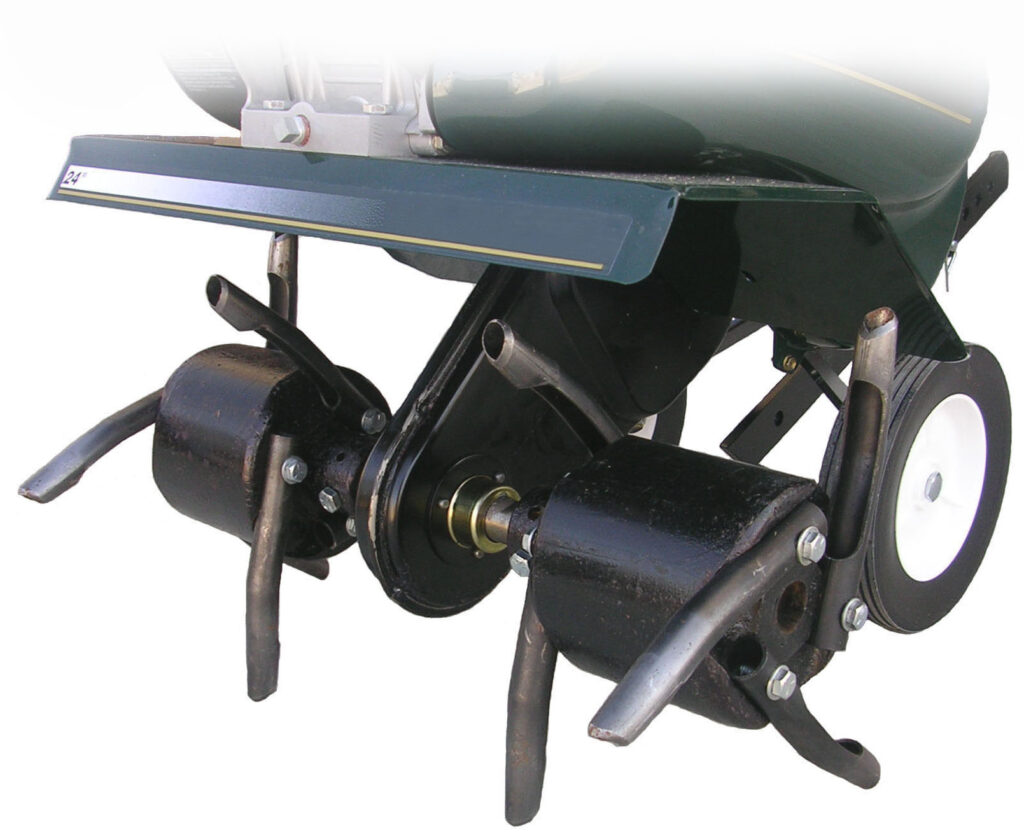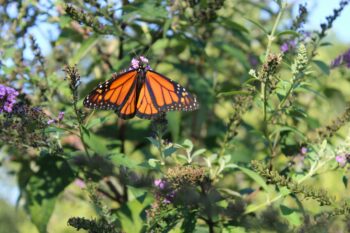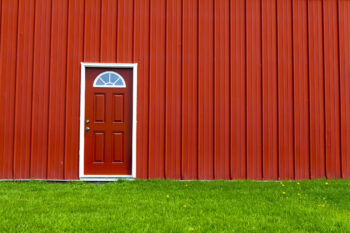Maintaining a healthy and vibrant lawn requires proper care and attention. One essential practice for promoting strong root growth and overall lawn health is lawn aeration.
In this article, we will provide you with a comprehensive guide on lawn aeration. We explain what it is, how to do it, and more.
What is Lawn Aeration?
Lawn aeration is the process of creating small openings or channels in the soil to allow air, water, and nutrients to reach the grassroots effectively. This helps combat soil compaction, which restricts root growth and prevents proper absorption of essential elements. Read one of our other articles, “Why Lawn Aeration is Important.”
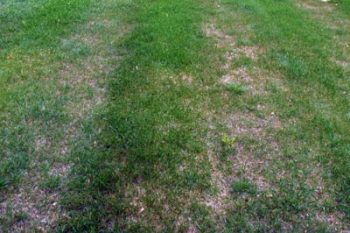
Benefits of Lawn Aeration
Enhanced nutrient absorption: Aeration improves the penetration of water, oxygen, and nutrients into the soil, facilitating their uptake by the grass roots.
Enhanced root development: Aeration loosens compacted soil, enabling roots to grow deeply and establish a strong, healthy lawn. There’s more you can do for your soil, take a look at our soil rejuvenation service page.
Improved drainage and water infiltration: Aeration reduces water runoff and allows better water penetration, preventing waterlogging and increasing drought resistance.
Reduced thatch accumulation: Thatch, a layer of organic matter between the grass blades and soil, is broken down through aeration, enhancing overall lawn health.
Enhanced effectiveness of fertilizers: By creating channels for nutrients to reach the roots, aeration maximizes the impact of fertilizers, resulting in a more vibrant and lush lawn.
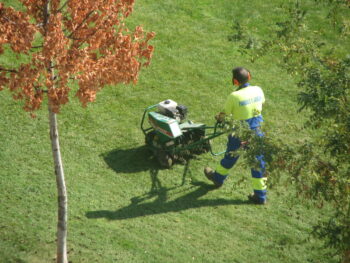
Types of Lawn Aeration
Core Aeration: This method involves removing cores or plugs of soil from the lawn. It is the most effective form of aeration and is recommended for lawns with significant soil compaction or thatch buildup.
Spike Aeration: Spike aeration involves puncturing the soil with solid tines or spikes, creating holes without removing soil cores.
Spike aeration is quicker but less effective than core aeration. Look at spike aeration purchasing options.
Steps of Core Aeration
Preparing the lawn: Water the lawn thoroughly a day before aeration to ensure the soil is slightly moist, making it easier to penetrate.
Use a core aerator: Rent or purchase a core aerator machine, which removes soil plugs, or use a manual core aerator for smaller lawns.
Run the machine: Starting from one side of the lawn, run the aerator in straight lines, overlapping each pass to thoroughly cover the entire lawn.
Repeat in multiple directions: To ensure maximum coverage and alleviate soil compaction effectively, make additional passes at right angles to the initial direction.
Post-aeration care: Leave the soil plugs on the lawn, where they will break down and provide additional organic matter to the soil. Water the lawn deeply to aid in the recovery process.
Steps of Spike Aeration
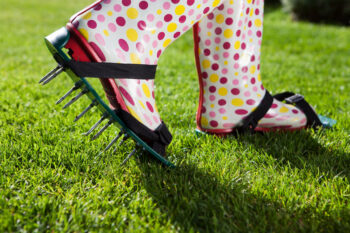
Using a spike aerator machine: Rent or purchase a spike aerator machine, which has solid tines or spikes attached. Follow the manufacturer’s instructions for proper usage.
Spike aeration with shoes: Alternatively, spike aeration can be done using spiked shoes. Walk evenly across the lawn, allowing the spikes to penetrate the soil as you move.
Repeat the process: Ensure you cover the entire lawn by making multiple passes, overlapping the previous paths.
Post-aeration care: Water the lawn deeply to aid in soil recovery and promote efficient absorption of water and nutrients. Noonan (2021) recommends it’s best to water in the early morning hours so you can make the most of your water usage and give your lawn the entire day to dry out.
Which Type of Aeration Is Best for My Lawn?
Generally, core aeration is more effective for alleviating soil compaction and thatch buildup. It is recommended for lawns with heavy foot traffic and those recovering from excessive thatch. Read what Penn State Extension has to say about managing thatch in lawns.
Spike aeration is useful for maintaining lawns with lighter compaction and as a quick fix between core aeration sessions.
How Often do I Need to Aerate My Lawn?
How often you need to aerate your lawn depends on various factors such as soil type, lawn usage, and maintenance practices. In general, it is recommended to aerate your lawn once every couple of years.
Beaulieu (2023) says, However, annual aerating may be necessary for high-traffic areas or if your lawn grows in heavy clay soil. If you notice excessive thatch buildup, poor water absorption, or stunted grass growth, these are indicators that it’s time to aerate your lawn.
Best Time of Year to Aerate a Lawn
When it comes to the best time of year for lawn aeration, it is generally recommended to aerate cool-season grasses in the early fall or spring. This timing allows the grass to recover and establish healthy roots before the stress of summer heat or winter cold sets in.
For warm-season grasses, the best time to aerate is in late spring or early summer, when they are actively growing. The soil should be moist as it is after a light rainfall. Make sure not to aerate if soil is dry or waterlogged.
Note:
Beaulieu (2023) informs that you should not aerate your lawn in the early spring, or you will create fertile ground for weeds to germinate.
The specific recommendation for aerating your lawn will vary depending on your location and the type of grass you have. It’s always beneficial to consult with a lawn care professional for customized advice based on your specific lawn conditions. Check out our lawn aeration service page.
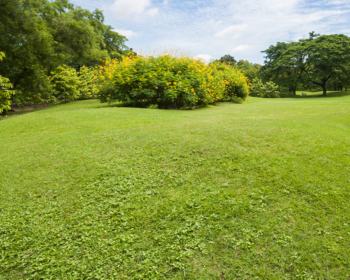
Conclusion
Proper lawn aeration is vital for maintaining a healthy and thriving lawn. By understanding what lawn aeration is and aerating your lawn as needed, you will promote optimal lawn growth and health.
Remember to assess your lawn’s specific needs and select the appropriate type of aeration to achieve the best results. With proper aeration, your lawn will be the envy of the neighborhood.
References:
Beaulieu, D. (2023, March 25). When and how do you aerate your lawn? The Spruce. https://www.thespruce.com/when-and-how-do-you-aerate-your-grass-2130974
Noonan, J. (2021, June 24). 11 Ways you’re accidentally ruining your lawn. Bob Vila Tried, True, Trustworthy Home Advice. https://www.bobvila.com/slideshow/11-ways-you-re-accidentally-ruining-your-lawn-50036

